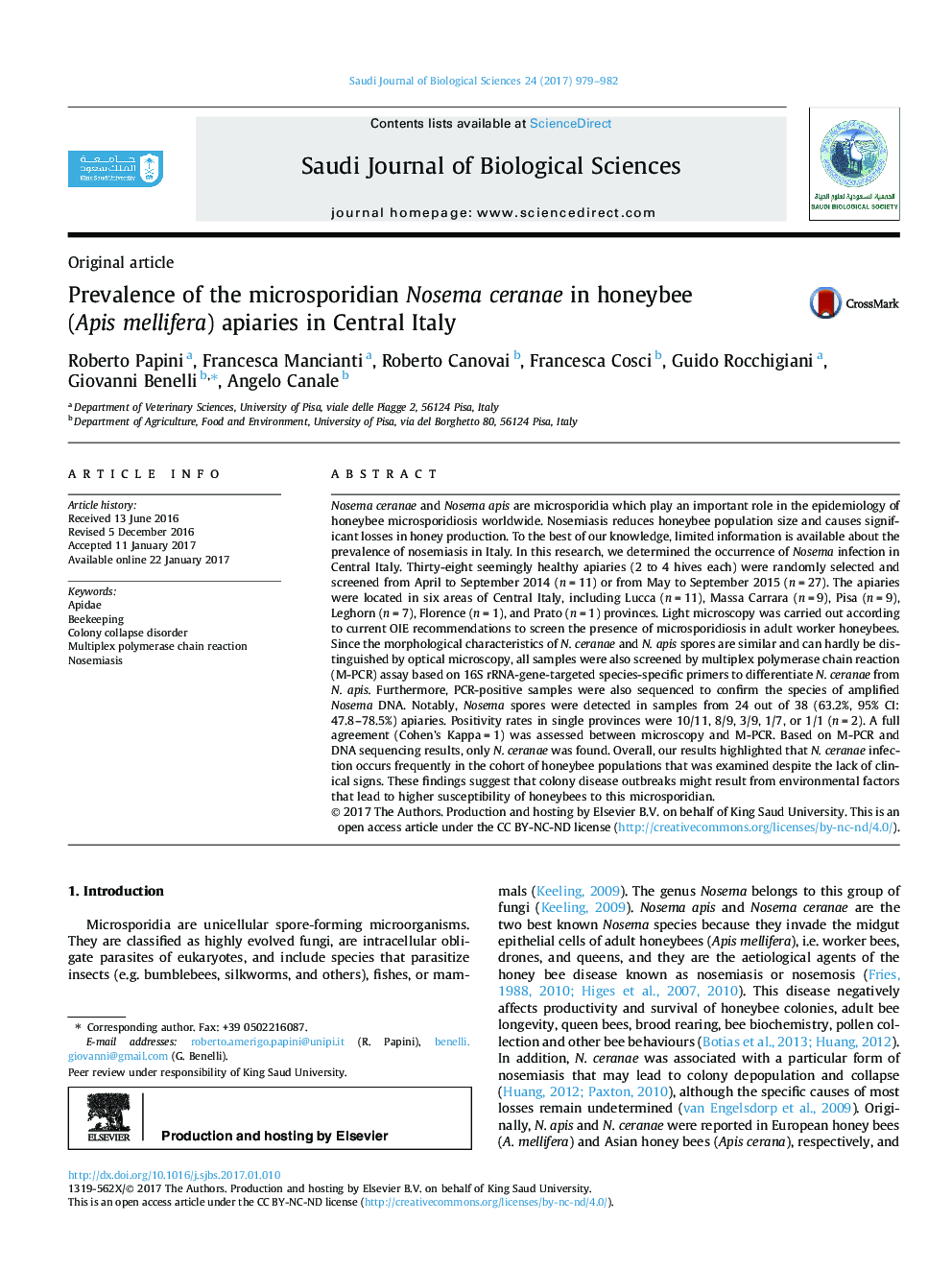| کد مقاله | کد نشریه | سال انتشار | مقاله انگلیسی | نسخه تمام متن |
|---|---|---|---|---|
| 5745467 | 1618664 | 2017 | 4 صفحه PDF | دانلود رایگان |

Nosema ceranae and Nosema apis are microsporidia which play an important role in the epidemiology of honeybee microsporidiosis worldwide. Nosemiasis reduces honeybee population size and causes significant losses in honey production. To the best of our knowledge, limited information is available about the prevalence of nosemiasis in Italy. In this research, we determined the occurrence of Nosema infection in Central Italy. Thirty-eight seemingly healthy apiaries (2 to 4 hives each) were randomly selected and screened from April to September 2014 (n = 11) or from May to September 2015 (n = 27). The apiaries were located in six areas of Central Italy, including Lucca (n = 11), Massa Carrara (n = 9), Pisa (n = 9), Leghorn (n = 7), Florence (n = 1), and Prato (n = 1) provinces. Light microscopy was carried out according to current OIE recommendations to screen the presence of microsporidiosis in adult worker honeybees. Since the morphological characteristics of N. ceranae and N. apis spores are similar and can hardly be distinguished by optical microscopy, all samples were also screened by multiplex polymerase chain reaction (M-PCR) assay based on 16S rRNA-gene-targeted species-specific primers to differentiate N. ceranae from N. apis. Furthermore, PCR-positive samples were also sequenced to confirm the species of amplified Nosema DNA. Notably, Nosema spores were detected in samples from 24 out of 38 (63.2%, 95% CI: 47.8-78.5%) apiaries. Positivity rates in single provinces were 10/11, 8/9, 3/9, 1/7, or 1/1 (n = 2). A full agreement (Cohen's Kappa = 1) was assessed between microscopy and M-PCR. Based on M-PCR and DNA sequencing results, only N. ceranae was found. Overall, our results highlighted that N. ceranae infection occurs frequently in the cohort of honeybee populations that was examined despite the lack of clinical signs. These findings suggest that colony disease outbreaks might result from environmental factors that lead to higher susceptibility of honeybees to this microsporidian.
Journal: Saudi Journal of Biological Sciences - Volume 24, Issue 5, July 2017, Pages 979-982